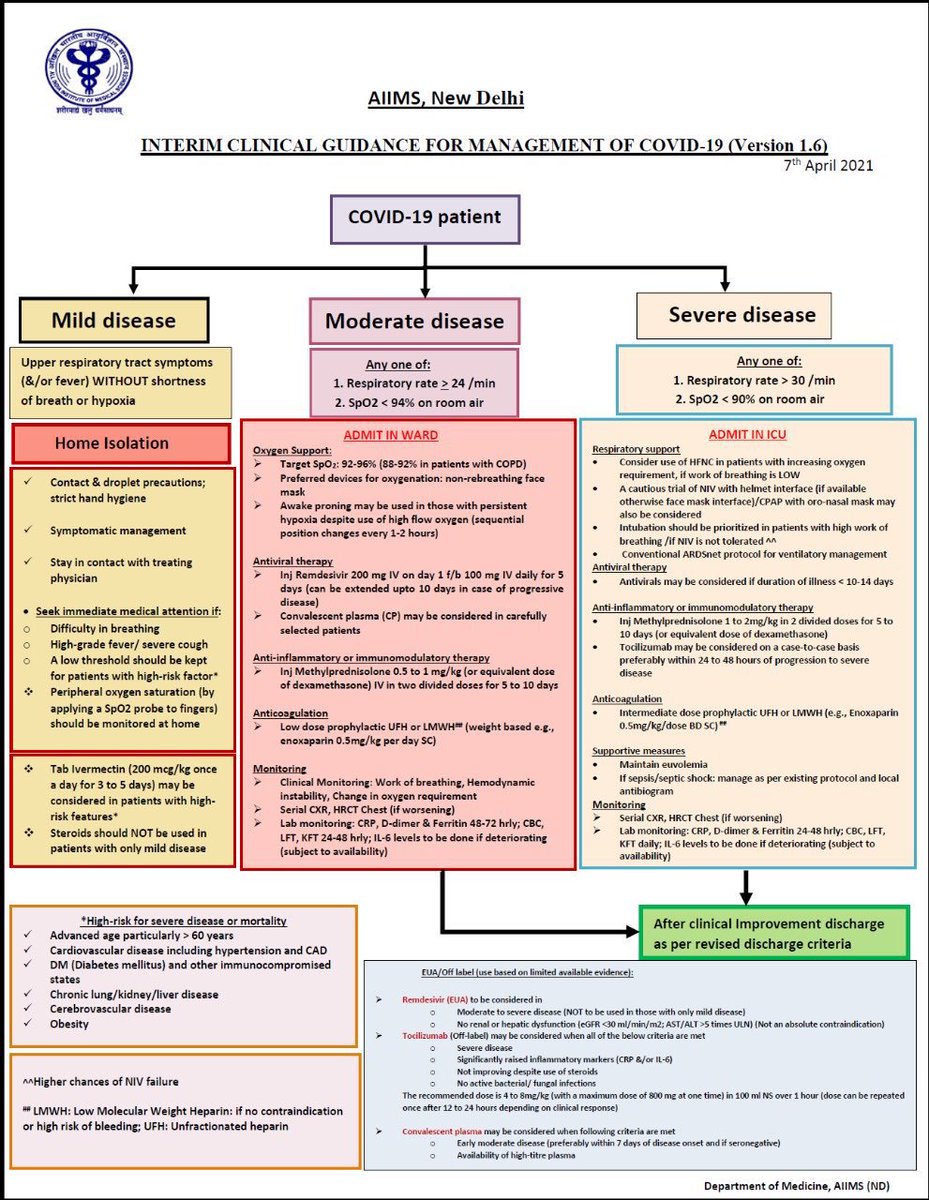
One tip
If a covid patient at home has a dip in oxygen levels (<94%) despite a 6 min walk test that means they need to get admitted in a covid bed with at least oxygen.
If a bed is available, public or private, get them admitted without DELAY
No If No But
If a covid patient at home has a dip in oxygen levels (<94%) despite a 6 min walk test that means they need to get admitted in a covid bed with at least oxygen.
If a bed is available, public or private, get them admitted without DELAY
No If No But
.....
After reaching hospital, hospital says only bed with O2 available, no ventilator
Mistake that people do this travel around looking for bed with ventilator (just in case)
My suggestion would be to get admitted if a bed with O2 is available esp in these times.
After reaching hospital, hospital says only bed with O2 available, no ventilator
Mistake that people do this travel around looking for bed with ventilator (just in case)
My suggestion would be to get admitted if a bed with O2 is available esp in these times.
...
At home, monitor O2 every two-four hours using a pulse oximeter. DO NOT take this lightly.
At home, monitor O2 every two-four hours using a pulse oximeter. DO NOT take this lightly.
*O2 - oxygen
If having mild symptoms, oxygen saturation is maintained, no comorbidity, isolate at home
There is no point doing CT scans and other investigations as long as your saturation is maintained and symptoms are mild
This reduces a lot of panic
I say this with full responsibility
There is no point doing CT scans and other investigations as long as your saturation is maintained and symptoms are mild
This reduces a lot of panic
I say this with full responsibility
Do NOT take unnecessary medications while on home isolation for mild COVID19 🙏🏻
Plenty of fluids, lemon juice (normal diet)
Paracetamol if required
Follow a routine even when on home isolation
Be in touch with someone who is knowledgeable, has a calming influence and provides realistic advice
Paracetamol if required
Follow a routine even when on home isolation
Be in touch with someone who is knowledgeable, has a calming influence and provides realistic advice
At Community level (for civil society, political/rel/spiritual groups
Organise for access to portable pulse oximeter
Every family may not have but especially one ward must have
Community action for health for home isolation has an untapped potential to destress hospitals
Organise for access to portable pulse oximeter
Every family may not have but especially one ward must have
Community action for health for home isolation has an untapped potential to destress hospitals
@threadreaderapp unroll
• • •
Missing some Tweet in this thread? You can try to
force a refresh



